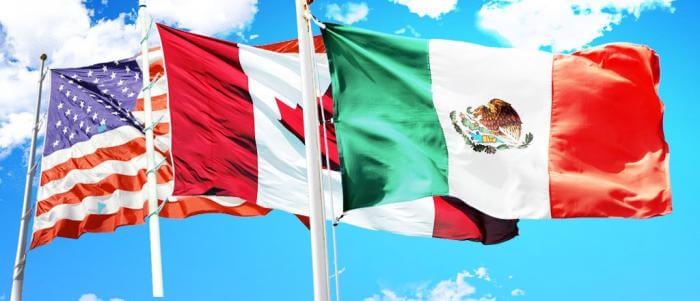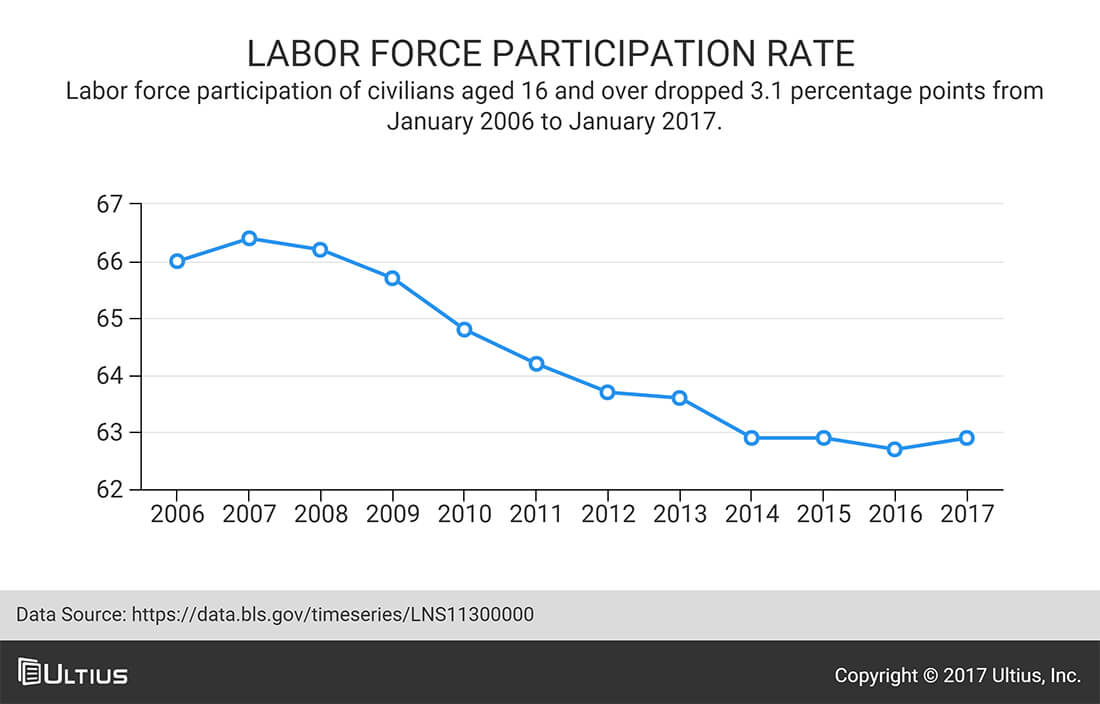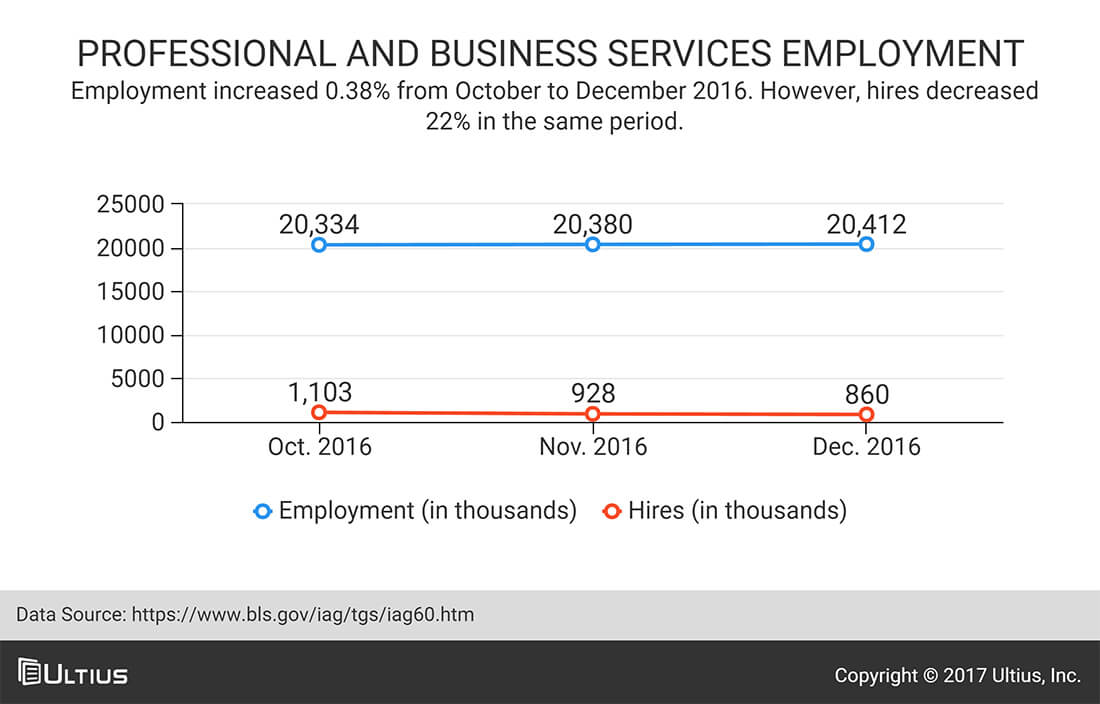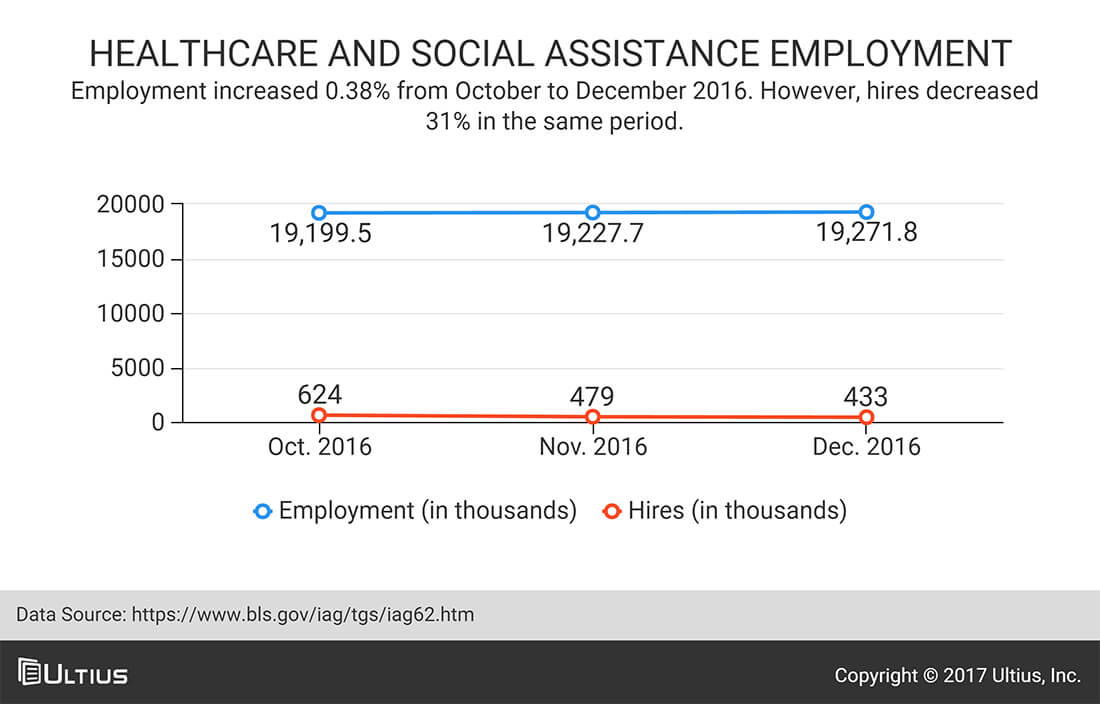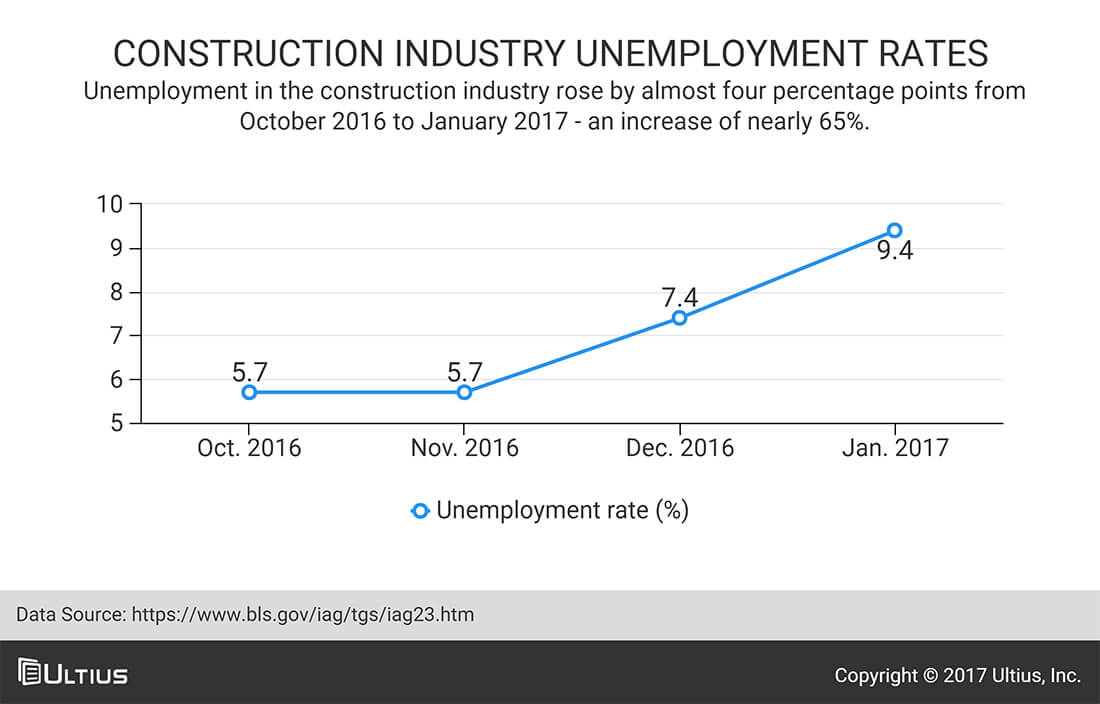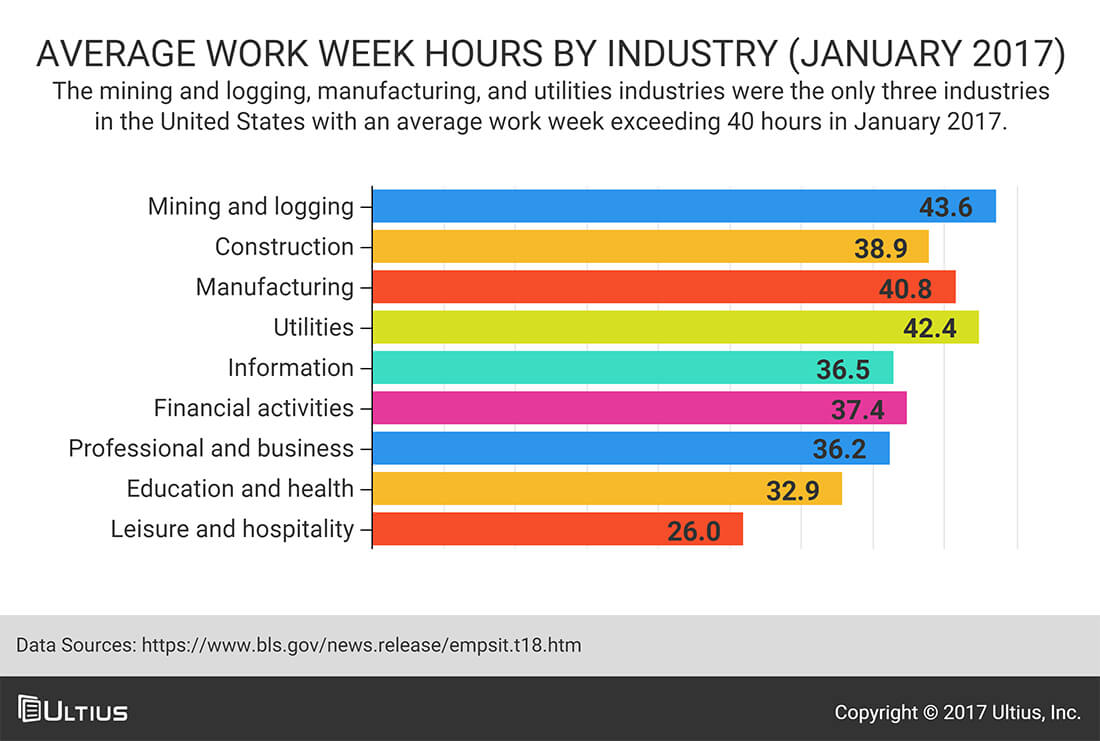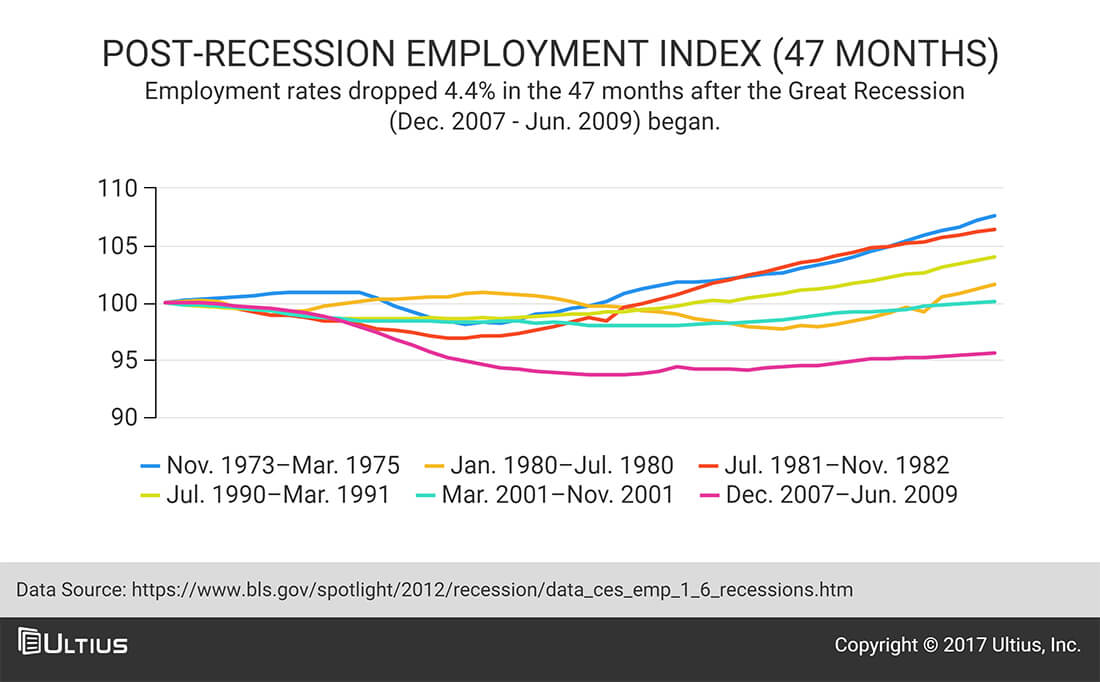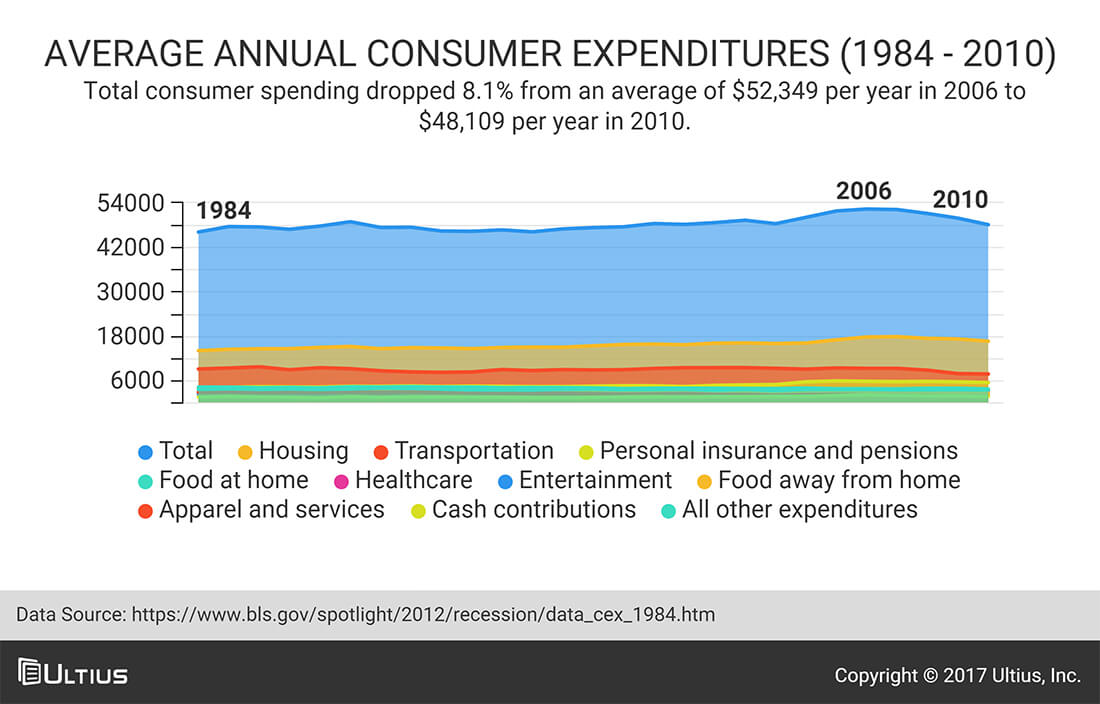Ultius Blog
U.S. Unemployment Numbers – What Do They Mean?
What "unemployment" actually means
Unemployment in the United States is a measure of the percentage of the population that does not currently work or contribute to the economy. It measures people who are able to work but are jobless, who have been looking for work for a minimum of four weeks, and workers who can be expected to be recalled from layoff.
Employment can be affected by a number of factors, including demographics, competition, education, and the economic climate. Generally, the unemployment rate can be expected to increase during times of economic depression and fall during times of economic prosperity. The United States Federal Reserve (FRS) has a dual mandate with the objective of maintaining price stability with the highest sustainable employment rate, which is a lofty goal to achieve.
How the U.S. economy works
What is American capitalism?
The American economy is a capitalist system. The idea of capitalism is to maintain a market without interference from the government. Capitalism is defined by a few key points. For one, there needs to be corporate or private ownership of capital goods. Also, distribution, production, and prices of goods must be determined by the free market competition. Finally, private decisions must determine investments.
Understanding the U.S. economy - Key concepts
Gross domestic product
The United States economy is measured by our gross domestic product, or GDP, which is the monetary measure of value for all goods and services produced either quarterly or yearly. Our GDP is an indicator of our economic performance. If the rate of growth for the country’s GDP becomes negative, the country’s economy is in a recession, while years of negative growth constitutes an economic depression.
Because the United States’ GDP has not been keeping up with that of the European Union and China, according to the Bureau of Economic Analysis (BEA), it is no longer the world’s largest and most powerful economy. Gross domestic product is determined by consumer spending, business and government spending, and net exports.
Supply and demand
The economy is driven by a concept known as supply and demand. It says basically that the lower the supply of a product, the higher the demand and the price, while higher supplies often lead to lower demand and prices. Supply can include labor as well as quantity, in addition to the natural resources required to supply the product, like oil or land. The United States Energy Information Administration (EIA) says that oil accounts for almost three quarters of the price of gasoline.
Examples of supply and demand at work can be found in Black Friday sales, where there is only a certain number of items available at a special price, driving up the demand for the item, or personal consumption. During the recession of 2008, the BEA shows that unemployment rates increased, meaning that there were less people in the labor force making money to pump back into the economy. Because people were not making as much money, there was less demand for many products that were not deemed absolutely necessary, slowing the economy.
Inflation and deflation
Inflation and deflation are also factors that greatly affect the United States economy. Inflation occurs when demand is higher than supply and higher prices can be expected. It can be difficult to recover from inflation because consumers come to expect prices to continue to rise and are driven to buy more before that happens, increasing the demand even more.
Another, less common cause of inflation is an influx in the supply of money. Deflation occurs when prices decrease; if prices fall too far, it can cause stock crashes or economic crises. If either inflation or deflation reaches an extreme, it can mean disaster for an economy.
What is economic policy?
Monetary policy
The Federal Reserve holds the power to control monetary policy. This means they have control of the use of credit, Fed fund rates, and the economy’s supply of money. All of which control how the economy is affected by interest rates. The main purpose of the monetary policy is to monitor and control inflation and stimulate the economy. In addition, the monetary policy is in charge of ensuring that the banking system functions smoothly.
Trade policy
Trade policy involves the imports and exports with other nations. Certain agreements seek to reduce the costs of trading and increase the gross domestic product for every country involved, like NAFTA.
Currently, the United States is pursuing regional and bilateral trade agreements including the Transatlantic Trade and Investment Partnership, a proposition that would link the economies of the United States and European Union, the world’s two largest economies. The new President of the United States, Donald Trump recently cancelled plans for the Trans-Pacific Partnership, which would have also linked the United States with eleven other countries that border the Pacific Ocean.
Exchange rates in trading have the power to influence the value of the dollar because most international trade contracts are done in U.S. dollars.
Fiscal policy
Fiscal policy is another term for the Federal Budget. The revenue for the federal budget comes from income taxes. It can depress, guide, or stimulate the economy, but cannot create economic growth on its own. While the President begins the budgetary process each year, nothing can become official until the plan is approved by Congress.
Most of the time, spending overcomes revenue, creating a deficit that is added to the national debt each year. A major contributor to the national deficit was the tax rebates, now known as the “Bush tax cuts” set up under then President, George W. Bush. The rebates followed an economic theory that says low taxes allow consumers to pump more money into the economy, which will generate enough money to make up for the loss in taxes. This still has yet to happen, although any plan that lowers taxes is often popular.
Understanding the U.S. labor participation rate
What is it?
The labor participation rate is a reflection of the economy’s labor force. More precisely, it measures the percentage of the able population that is working or seeking employment. In terms of unemployment, it reveals how many people are actively participating in the work force. Members of the population that are included in the labor participation rate include those who are already employed or are trying to enter the workforce and are above the age of sixteen. It does not count people who are unable or uninterested in working, including the retired population, students, stay-at-home parents, and those who are incarcerated.
Why it matters for analyzing unemployment
The labor participation rate is an important factor in analyzing a country’s unemployment rate. Without it, it may seem as though there are fewer people earning an income and contributing to the economy. However, it does not take into account the people who are not working due to illness, injury, school, old age, or choice. Students are honing their abilities and increasing their future potential for landing a job out of college while retirees are spending their savings and still pumping money into the economy.
The labor participation is also important because of the way it is affected by a recession. According to Indiana University’s Kelley School of Business, a poor economy often results in a lower labor participation rate. When an economy is in a recession, people are often discouraged by the lack of available employment opportunities and stop actively looking for work. The more people who are not seeking employment, the lower the labor participation rate.
Total non-farm payroll employment in the U.S.
What is it?
Non-farm payroll employment is a monthly report conducted by the United States Bureau of Labor Statistics (BLS) that represents the total number of paid workers of any business in the United States. As its name suggests, it does not include farm employees, in addition to government jobs, those who work for nonprofit organizations, and private household jobs. It is reported on the first Friday of every month.
The non-farm payroll demonstrates which fields generate the fastest growing job rates, in addition to which ones see the greatest loss in jobs. According to the BLS, this data is taken from the following sectors; mining, construction, manufacturing, retail and wholesale trade, transportation, information, financial, business and professional services, health services, education, and leisure and hospitality.
Why is it important?
The non-farm payroll employment report is important because it indicates the number of additional jobs to be added or lost each month. It can also provide insight on the value of the dollar, the price of gold, and other important factors that directly impact the economy and stock market. The non-farm payroll is a great indicator for the state of the economy, as the total accounts for about four fifths of those who produce the gross domestic product of the economy. It also reports the average American work schedule and hourly earnings in order to track wage growth.
Key employment numbers in U.S. professional business services
According to the United States Department of Labor (DOL), this sector includes the management of companies, administrative services, waste management services, remediation, scientific services, and technical services. Recently, employment in professional business services has been doing well.
The employment numbers in the professional and business services industry made up a quarter of the jobs gained during 2014. Since then, the BLS shows a slow but steady increase in employment. This growth can be traced back to a large increase in administrative and waste services positions throughout 2014.
Though one third of those jobs were for temporary help services, they accounted for a fifty-four percent rise in employment gains. In terms of compensation, the average employee in the professional business services sector was paid about thirty-one dollars per hour in 2016 and continues to ride slowly but steadily. During the last year, the employer compensation cost per employee has been up and down between one and three percent, currently lying at just under two percent.
Healthcare employment numbers in the U.S.
The healthcare industry includes establishments that provide health care for individuals. It also includes social assistance because it can often be difficult to establish a boundary between the two. The services provided by these companies must be administered by trained professionals. The most recent data collected by the BLS report that the average hourly wage for health care employees is over twenty-six dollars per hours and that the average work week remains steadily at thirty-three hours per week. In 2016, employer costs for employee compensation rose by two percent.
Not only has the industry seen growth, but employment is expected to increase for several years to come. The BEA projects that the healthcare industry will experience the fastest growth in employment rates and add the most jobs by the year 2024, especially more people sign up for government provided health care, like they did for the Affordable Care Act. One of the two occupational groups projected to grow the fast between now and 2024, according to the BLS, is health care support and practitioners. This group alone is expected to contribute greatly to more than a quarter of all new jobs.
Many people will be entering into retirement age over the next several years, meaning that the labor force participation rate can be expected to fall, leading to both a greater need for healthcare employees and a gross domestic product growth of over two percent per year. This is expected to create almost ten million more jobs by 2024.
Employment numbers in construction
The construction industry is comprised of the businesses that are mainly involved in construction and engineering of buildings, preparing sites for new establishments, or selling land for new building sites. Construction includes alterations and maintenance in addition to new work.
Though employment in the construction industry is not rapidly falling, it is currently not growing promisingly. In the last few months of 2016, the BLS reported that the construction industry actually lost a handful of jobs and unemployment rates within the sector grew by almost two percentage points.
Still, the report also stated that construction is expected to add almost eight hundred thousand jobs by 2024. While that sounds promising, this would still not bring the industry jobs back to its peak in 2006.
Currently, the average hourly wage for an employee in the construction industry is over twenty-eight dollars per hour while the average work week is almost thirty-eight hours long, according to the BLS. During 2016, employer compensation costs per employee have decreased in the construction sector after several financial quarters of a steady increase.
What the average work week looks like
The average work week differs from industry to industry. Surprisingly, there are only three industries in which the average work week is forty hours or more per week, or full-time. These industries include mining and logging, manufacturing, and utilities. The work week for the remaining industries fell below full-time status and some are far from it. For example, the leisure and hospitality sector averaged twenty-six hours per week and the education and health industry came out to under thirty-three hours per week.
While we consider full-time in the United States to be forty hours per week, the average work week looks different around the world. According to the Organisation for Economic Co-Operation and Development, the average worker in the United States worked about thirty four hours per week on average. Countries with longer work weeks like Mexico sees the average worker working about forty-three hours per week, the highest average work week in the world. Comparatively, countries like Germany, the Netherlands, and Norway see an average workweek of about twenty-seven hours per week.
How U.S. unemployment changed with the economic climate
As can be expected, unemployment in the United States has varied in the last century with the economic climate. During the Great Depression, unemployment rose to a quarter of the population while it sank as low as one percent during the First World War. The economy saw a recent peak in 2009 at one tenth of the population, which measured just under another peak in 1982, according to the BLS. Within the last seventy years or so, the average unemployment rate has been just below six percent, despite any peaks or lows.
What causes unemployment?
There are a number of factors that can affect unemployment rates within a country’s economy. The most obvious influence on unemployment is the economic climate. For example, the recession of 2008 followed a mortgage crisis, increasing unemployment to almost eleven percent, according to data from the BLS. The poor economic climate had a direct influence on the rate of unemployment in the United States.
Another factor that affects unemployment is demographic trends. Currently, a large number of people in the United States are aging or about to age out of the labor force. Beginning in 2000, members of the Baby Boomer generation began to retire, creating a decrease in the rate of labor participation.
Another demographic trend that can affect unemployment rates is education levels. Reports by the DOL show that as more people obtain degrees in higher education, the unemployment rate drops. In fact, 2015 saw unemployment rates of approximately seven percent in members of the labor force who has less than a high school diploma while those who had attained a bachelor’s degree or higher experienced unemployment rates of less than three percent. This is a good example of why despite the rising costs, pursuing a higher education is a good idea.
Perhaps an unexpected factor, the rise in contract workers in the United States has increased greatly over the last decade, playing its own part in influencing the unemployment rate. These positions are different from regular employment arrangements because they lack the same type of formal commitment and include freelance work, on-call employment, and temporary agency positions. Employers are not required to pay employment taxes on the work done by those employees and the employees do not have the same taxes taken out of their payments. A Harvard University study noted a significant increase in the percentage of the labor force that has such an employment arrangement.
In the ten years between 2005 and 2015, the rate of contract workers rose by almost six percent. In addition, the number of companies that hire contract workers as their main employees increased from less than one percent to more than three during the same time period. Workers to utilize online services for employment like Uber or Lyft accounted for half a percent of all workers in 2015 (Katz 2016). This contributes to a decrease in the number of traditional jobs and employees in the work force, altering the unemployment rate.
Government policy also plays a significant role in unemployment rates, as well. After the recession of 2008, the federal government was responsible for reducing the budget deficit by increasing taxes on those with higher incomes and reducing spending, among other strategies. In addition, the Federal Reserve gave the economy a boost by pumping more money into it. This helped to restabilize the United States economy and return unemployment to a more manageable level.
The Great Recession of 2008
Causes of the 2008 recession
The great recession of 2008 followed a number of catastrophic economic events. The DOL reported that almost nine million jobs were lost between 2008 and 2010, driving unemployment up to eleven percent. These numbers qualify this recession as the worst since the Great Depression. One major cause of the recession was the bursting of the housing bubble.
The prices of homes rose quickly and people’s incomes were unable to keep up. Though the period between 2000 and 2007 saw low inflation and unemployment, beneath this stability, the credit of the major banks and our financial market were increasingly unstable.
As these credit problems continued, banks were less careful in their lending and loosened their criteria for a number of loans, including mortgages. People were given huge mortgages without needing to provide much proof of being able to repay them, leaving many people unable to pay their mortgages during the economic downturn.
These loans were resold to international financial institutions, exposing other countries to our decreasing housing market. Finally, the housing bubble burst and countless mortgages went into default. Homeowners were forced to deal with the negative equity, leaving them unable to rely on remortgaging to gain control of their finances. This caused many major banks to lose a significant amount of money as well, and require a bailout from the federal government.
A crisis of such a global nature also meant negativity for foreign economies as well. Not only did it affect the countries that were sold the repackaged mortgages, but it affected the world trade system as well. What made this recession worse than those previous is that there was a sharp rise in oil prices. Typically, oil prices fall during such economic hardships, but the rising demand for oil in China and India caused oil prices to rise instead as the United States and Europe faced recession.
How the Great Recession compared to earlier recessions
During the recession of 2008, the economy experienced effects similar to those that arose from earlier recessions, but at a more troublesome rate. The decline in employment between December 2007 and June 2009 was greater than that of any other economic recession in the United States in recent memory, according to a report by the BLS. For example, forty-seven months after the recession of 1973 began, employment rates were almost ten percent higher than they were when the recession began; alternatively, employment was more than four percent lower nearly four years after the recession of 2008 began.
Mass layoffs in the U.S.
When a minimum of fifty unemployment claims are filed for a single company during over five weeks consecutively, that qualifies as a mass layoff. During the recession of 2008, specifically in February of 2009, the BLS reported that the economy experienced over three thousand mass layoffs, affecting more than three hundred thousand workers.
Effects on U.S. consumer spending
As can be expected, consumer spending was significantly affected during the recession of 2008. In terms of 2010 dollars, the BLS reported that the average expenditures per household in the United States during 1984 was just over forty-six thousand dollars, while the number peaked at approximately fifty two thousand during 2006. By 2010, the expenditures per household had dropped by about four thousand dollars. It was also reported that this period saw decreased spending in every sector, with the exception of healthcare.
How U.S. unemployment differed across industries
The recession of 2008 did not affect every industry in the same way. Usually, the largest rise in unemployment during a recession belongs to the industries that produce goods and this recession was no exception. According to the BLS, both the manufacturing and construction industries saw their largest decline since World War II, dropping almost fourteen percent and ten percent, respectively. Unfortunately, the economy didn’t bounce back the same way it did after WW2.
Surprisingly, though, the financial sector also experienced a decline in employment of nearly four percent. Data from the BLS shows that this industry has not experienced a decline during a recession since 1939. Worth noting is that employment in several fields increased, such as health services and education. This has occurred in these industries in every recession since 1945 except for one.
A slow recovery
Though the recession technically ended in 2009, the economy did not experience dependable job growth or promising gross domestic product until 2011. When the recession began, the unemployment rate was almost six percent, according to the BLS, peaked at eleven percent between December of 2009 and January 2010. It did not dip back down to where it was pre-recession until June of 2014 and has generally been decreasing slowly since.
What factors affect unemployment for individuals?
According to the most recent date by the BLS, the rate of unemployment varies depending on how long a person has been unemployed. The average duration of unemployment in the United States is twenty-six weeks. To analyze this data, unemployed persons have been divided into groups depending on how long they have not been working. The majority of people who are unemployed have been out of work for fifteen week or more. The lowest number of people belong to the group that has been unemployed for fifteen to twenty-six weeks at less than sixteen percent.
Other factors that seem to have an effect on unemployment are race, sex, and industry of employment. In terms of the industry, the sector with the highest unemployment rate is agriculture with a rate of over eleven percent, according to the BLS. Following agriculture, the next industry with the highest unemployment rate is construction, where the rate is seven and a half percent, and leisure and hospitality, where the rate is one percent lower.
Sex seems to have less of an effect on employment, as the numbers vary only slightly. The DOL reports that the unemployment rate among men is barely over four percent while the rate for women is only three tenths of a percentage lower. Race, though, does seem to play a part in unemployment rates. The rate for the African-American community is almost three percent higher than the national average at over seven and a half percent. The Asian community experiences a rate of unemployment of less than three percent while the Latino community’s rate is at just under six percent.
International unemployment
For the most part, many countries with economies similar to ours have similar rates of unemployment. The most recent data collected by the BLS shows that unemployment rates in Australia, Canada, the Netherlands, Belgium, and Finland all fell within two percent of the United States’ rate. France, Italy, Ireland, and Portugal all reported unemployment rates higher than ten percent. The lowest rate reported was in Japan, where unemployment is less than four percent, while the highest reported rate was in Spain, where more than one quarter of the population is unemployed.
Why the U.S. unemployment rate is so volatile
In conclusion, the unemployment rate is as delicate as the economy that determines it. There are a wide variety of factors that can affect a country’s unemployment rate. These include, but are not limited to, demographics, the industry, and the economic climate. A lower rate of unemployment generally indicates good economic health and growth. Accounting for nearly one quarter of nominal global gross domestic product, an economy as large and intricate as that of the United States can only be expected to experience an occasional extreme in either direction.
Works Cited
"About the Construction sector." U.S. Bureau of Labor Statistics. U.S. Bureau of Labor Statistics, n.d. Web.
"About the Health Care and Social Assistance sector." U.S. Bureau of Labor Statistics. U.S. Bureau of Labor Statistics, n.d. Web.
"About the Professional and Business Services supersector." U.S. Bureau of Labor Statistics. U.S. Bureau of Labor Statistics, n.d. Web.
"Bureau of Economic Analysis." US Department of Commerce, BEA, Bureau of Economic Analysis. US Department of Commerce, n.d. Web.
"Bureau of Economic Analysis." US Department of Commerce, BEA, Bureau of Economic Analysis. US Department of Commerce, n.d. Web.
"Bureau of Labor Statistics Data." U.S. Bureau of Labor Statistics. U.S. Bureau of Labor Statistics, n.d. Web.
"Employment Situation Summary." U.S. Bureau of Labor Statistics. U.S. Bureau of Labor Statistics, n.d. Web.
International Monetary Fund. "Report for Selected Countries and Subjects." Report for Selected Countries and Subjects. International Monetary Fund, n.d. Web. 21 Jan. 2017.
Katz, Lawrence F. “The Rise and Nature of Work Arrangements in the United States, 1995-2015”. Harvard University, 29 Mar. 2016.
OECD. "Average annual hours actually worked per worker." Average annual hours actually worked per worker. OECD, n.d. Web.
Parker, Martin. Pearson, Gordon. Capitalism and Its Regulation: A Dialogue on Business and Ethics. 2005. Journal of Business Ethics. Springer. Vol. 60, No. 1. Pp. 91-101.
"Professional and business services accounted for 25 percent of job gains in 2014 : The Economics Daily." U.S. Bureau of Labor Statistics. U.S. Bureau of Labor Statistics, n.d. Web.
"Table B-1. Employees on nonfarm payrolls by industry sector and selected industry detail." U.S. Bureau of Labor Statistics. U.S. Bureau of Labor Statistics, n.d. Web.
United States. US Department of Labor. The Recession of 2007-2009. Bureau of Labor Statistics, Feb. 2012. Web. Jan. 2017.
United States Bureau of Labor Statistics. International Unemployment Rates and Employment Indexes, Seasonally Adjusted, 2009-2013. Rep. 2013.
- MLA Style
- APA Style
- Chicago Style
- Turabian
Ultius, Inc. "U.S. Unemployment Numbers – What Do They Mean?." Ultius | Custom Writing and Editing Services. Ultius Blog, 01 Mar. 2017. https://www.ultius.com/ultius-blog/entry/u-s-unemployment-numbers-what-do-they-mean.html
Copied to clipboard
Click here for more help with MLA citations.
Ultius, Inc. (2017, March 01). U.S. Unemployment Numbers – What Do They Mean?. Retrieved from Ultius | Custom Writing and Editing Services, https://www.ultius.com/ultius-blog/entry/u-s-unemployment-numbers-what-do-they-mean.html
Copied to clipboard
Click here for more help with APA citations.
Ultius, Inc. "U.S. Unemployment Numbers – What Do They Mean?." Ultius | Custom Writing and Editing Services. March 01, 2017 https://www.ultius.com/ultius-blog/entry/u-s-unemployment-numbers-what-do-they-mean.html.
Copied to clipboard
Click here for more help with CMS citations.
Ultius, Inc. "U.S. Unemployment Numbers – What Do They Mean?." Ultius | Custom Writing and Editing Services. March 01, 2017 https://www.ultius.com/ultius-blog/entry/u-s-unemployment-numbers-what-do-they-mean.html.
Copied to clipboard
Click here for more help with Turabian citations.


